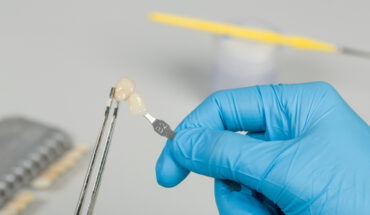
Dental implants may seem like a significant investment. Many people may research the possibility of reducing the total cost by having All-on-4 dental implants overseas.
While having a holiday along with dental implants may seem like an appealing idea, it’s worth looking into the all-on-4 plus risks and benefits of Dental tourism.
All on 4 Plus Implants Work
Teeth Replacement with dental implants is more challenging in the upper jaw than it is in the lower. The All On 4 Plus treatment offers solutions to address these challenges, whilst still focusing on addressing patients’ common desire for an uncomplicated treatment process as well as predictable aesthetics and function with immediate replacement teeth.
There are a number of factors that take into account when planning all-on-4 Plus dental implants to replace missing teeth and this new dental technique must address these factors in a number of ways:
- Reduced Bone Density: this may impact on the stability of dental implants at the time of surgery and could therefore affect the timing of tooth replacement. That is, if the implants placed in the bone are not stable enough, it is not desirable to attach a tooth replacement bridge to them. The All On 4 Plus technique may involve additional teeth implants that are suitable for poor quality bone. These are placed in a special way to attain improved stability at the time of surgery. We also group these implants by connecting them to each other through the replacement bridge, and this means that the load can be shared by all the tooth implants. In the vast majority of cases by using these advanced methods, we are still able to fit the replacement teeth within 1-3 days of the surgery.
- Bone Resorption and Reduced Bone Volume: following tooth loss, resorption (loss of volume and size) of the alveolar bone is a natural phenomenon. The alveolar bone is the outer part of the jawbone, which once housed the teeth. The upper jaw is smaller in size and resorption is often more advanced, which means that when considering full set upper teeth replacement, there is less available bone width to fit the teeth implants. The All On 4 Plus technique involves an alveolectomy, the re-shaping of the thinner alveolar bone until the base of the jawbone is sufficiently wide to accept the implants. In certain cases we also use additional advanced techniques to improve bone width that enables us to place the implants and fit immediate replacement teeth.
- Maxillary Sinuses: The maxillary sinuses are spaces in the jawbone that may preclude teeth implants in the back of the upper jaw due to lack of bone. The All On 4 Plus technique involves placing the back implants at an angle alongside the sinuses, and where indicated, place a bone graft in the sinus space at the same time. For the graft material we often save and recycle the bone from the alveolectomy.
Treatment Method Risks
All-on-4 dental implants have a very high success rate. This is no surprise as the success rate for dental implants is roughly 95% and almost 100% for bridges. Like with any procedure, however, there are potential risks and complications with all-on-4 treatment, including:
- Surgical complications such as infection, poor healing, extensive bleeding or discomfort
- While rare, dental implants can fail
- Dental implants not integrating due to factors such as smoking, poor bone density, nutrition, or pre-existing health conditions
Several factors can affect the success of all-on-4 dental implants, including:
- Poor oral hygiene after treatment
- Plaque build-up, which can lead to periodontal disease, bone loss, and ultimately, implant failure
- Smoking, which prevents proper healing
- Teeth grinding, which mainly impacts the longevity of the fixed-bridge
Also there are risks associated with All-On-4 plus preventable treatment. For example, dental implants can fail due to peri-implantitis, which is a form of gum disease that impacts the implant. However, peri-implantitis can be prevented with proper care, including brushing, flossing, and regular check-ups with your dentist. Some patients may have a higher risk of contracting peri-implantitis, for example those with partial edentia, a smoking habit, poor plaque control or pre-existing chronic periodontitis.
Does All-On-4 Plus Hurt?
All-on-4 plus can last decades. The longevity of your all-on-4 treatment can vary depending on your age, the quality of your implants, your health, and whether you floss and brush your teeth properly.
As with any procedure, there will be some discomfort during the healing process after all-on-4 treatment. During the procedure, patients often receive general anaesthetic (where you are completely asleep) or IV sedation (where you are in a twilight state. This ensures that the treatment is as pain-free as possible. All-on-4 treatment is minimally invasive and involves no bone grafting, so the recovery period is shorter than for traditional implants.
Is All-on-4 Dental Tourism an Option?
Global dentists such as in Turkey, Thailand and the Philippines increasingly use online advertising guides including social media to present information about the reduced costs of overseas dental treatment compared to the prices in Australia. However, once you include travel expenses, accommodation, meals and other incidental charges, it likely ends up just as expensive.
With these costs added to the treatment fee, the financial savings will likely be minimal. These travel costs aren’t a one-off expense. You’ll incur these costs again if you return to the same clinic for the six-month follow-up appointment or any post-implant issues that could arise.
It is important to remember that there’s more to consider than just the treatment fee when choosing a dental clinic for All-on-4 implants.
The Overseas Experience or Experiment?
Dental tourism is a great way to save money and get the best dental treatment possible.
- Save Money: You can save up to 50% of your costs, or even more if you decide on all-on-4, but it depends on which country you travel to. The most common places are Thailand and India where prices are lower than in Australia and Europe.
- Get Better Quality of Life: With dental tourism you will have access to better quality food and accommodation at an affordable price which helps improve your overall health as well as giving yourself time off work so that there’s no pressure on your budget.
People choose to have All-on-4 implants overseas to reduce the treatment fees of the procedure. Combining dental work with a holiday can make it a more appealing experience. Taking a week or two to spend time in an exotic location and coming home with a brand new smile does sound great.
Some of the countries known for dental tourism in the Asia-Pacific region include:
- Thailand
- Dubai
- The Philippines
Of course, these days travelling comes with some risks, whether it’s a health risk or political uncertainties. Unfortunately, having the All-on-4 implant procedure overseas comes with added risks.
Getting It Done in Australia
You may be wondering, “What is the conclusion?” Well, there are several things you should know before embarking on dental tourism. First and foremost, it’s important to note that not all dentists in foreign countries can process your health insurance. So if you’re looking at dental tourism as an option for getting treatment overseas and don’t want your teeth removed by force – and if you can afford it – then we’d recommend going through with it.
But ultimately the All-on-4 Plus method is an excellent choice for global dental tourists looking to visit Australia. The benefits of this method are many and include a faster recovery time, cost savings and greater comfort while undergoing their treatment. If this sounds like something that interests you but isn’t quite ready yet then we suggest you keep googling “all-on-4 plus” in coming months to seek out more updates and advantages.




